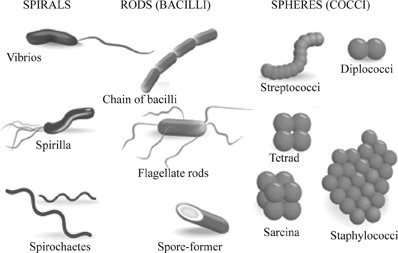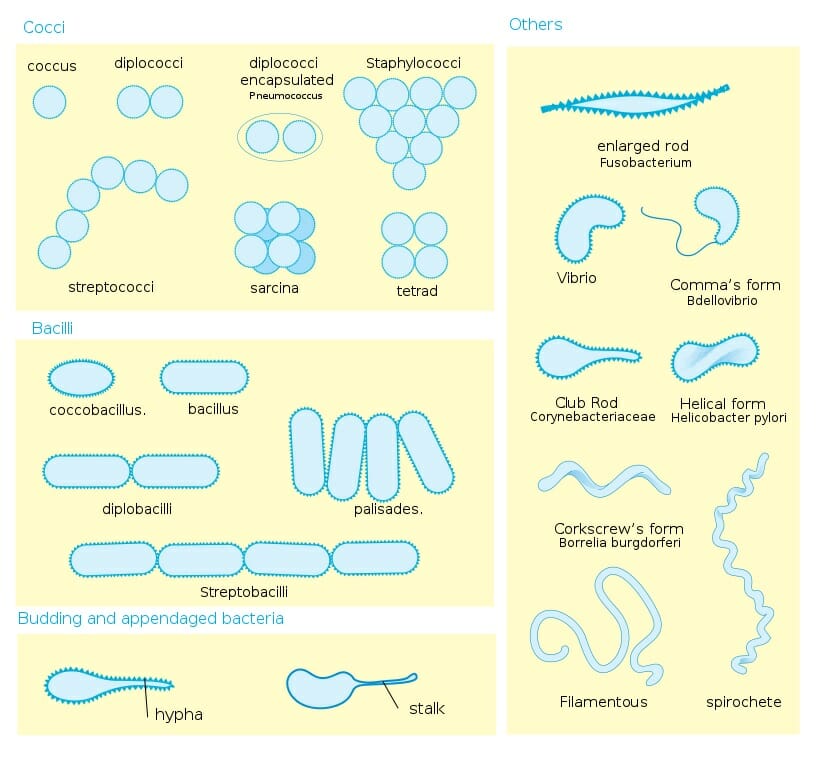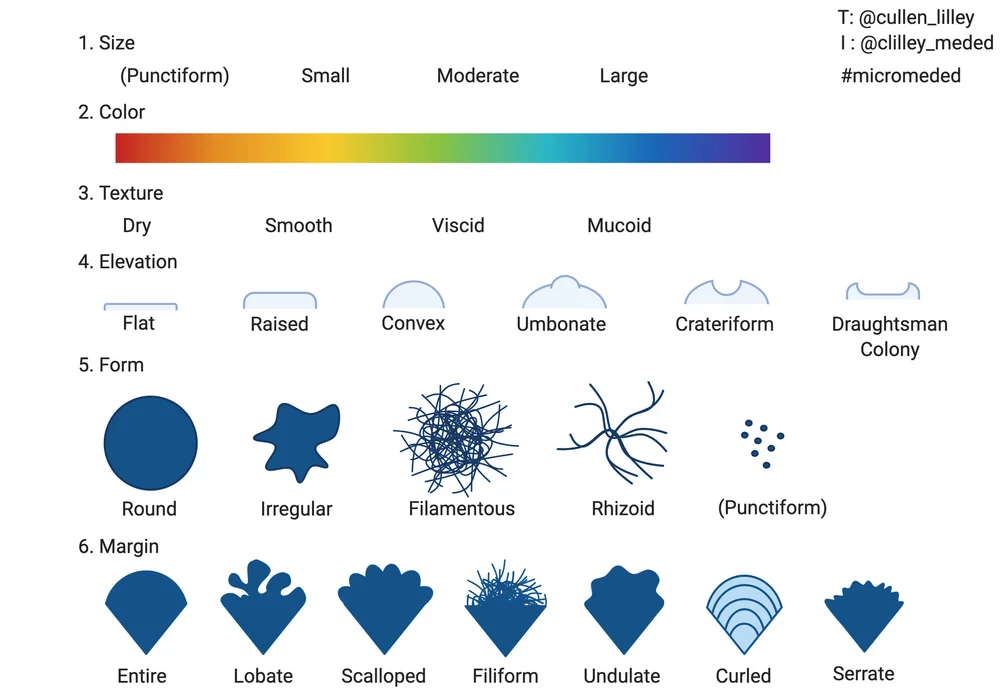Terminology Used to Describe Bacterial Morphology
This exercise will help you identify the cultural characteristics. Frequently during the semester you will need to describe bacterial or fungal growth observed on slants or Petri plates.

Microbiology Of Bacterial Morphology Shape Youtube
Here I will discuss only three to give a flavor for how selective pressures impact cell shape.

. Diameter of a bacterial ribosome Although bacterial cells vary in size depending on the species most bacteria have a diameter of approximately _____. Bacteria are very small unicellular microorganisms ubiquitous in nature. These are filament-shaped bacteria that are thin long and are filamentous.
It will be useful to learn the terminology used for describing common colony types. The following outline will be helpful for verbally communicating the appearance of observed colonial growth. Because colony morphology may be influenced by the conditions under which the species is cultured it is important to describe those conditions accurately.
Different shapes of bacteria are used to categorise bacteria. A colony is defined as a visible mass of microorganisms all originating from a single mother cell therefore a colony constitutes a clone of bacteria all genetically alike. Size Shape Color also known as pigmentation Texture Height aka.
Learn about the three main shapes of bacterial cells their cell arrangements and. Define the following terms used to describe bacterial morphology or bacterial arrangements and give examples of SPECIFIC organisms that are representatives of each category of Morphology AND Arrangements. The formation of two new cells of approximately equal size and morphology as the result of the parent division.
Surface it pertains to the appearance of the colonys surface such as rough smooth glistening dull or wrinkled. Bacterial cell morphology can be classified into three main shapes which are coccus bacillus and spiral. Pick the colony you want to focus on and measure the diameter of the colony in millimeters.
Cocci - is any bacterium that has a spherical ovoid or generally round shape. Coccus bacillus vibrio coccobacillus. These are the characteristics used to accurately and consistently describe the morphology of a bacterial colony.
Pick a Colony and Measure Its Size. Cocci - are round cells sometimes slightly flattened when they are. Bacterial Morphology and Arrangement.
Example is Staph Epidermis. Used by Gram negative pathogenic bacteria to inject toxins or. Indeed bacteria are classified on the basis of many characteristics.
Define the following terms used to describe bacterial morphology or bacterial arrangements andgive examples of SPECIFIC organisms that are representatives of each category ofMorphology ANDArrangementsFor example. Different shapes of a bacterial cell are. Since microbial morphologies did not have enough structural variability to have much phylogenetic significance as seen in two other organismal sciences botany and zoology more focus was placed on the biochemical aspects of the organisms.
Club-shaped Rod Bacteria i. Example is Staph Epidermis. Bacilli - are rod-shaped endospore-forming aerobic or facultative anaerobic Gram-positive bacteria.
The Most Common Morphologies are. Used during conjugation 3. Cocci can be single or multiple in a group of 2 4 8 etc.
Cocci bacteria can be round oval or elongated or bean-shaped. An example of a cocci organism isStaphylococcus aureus a Morphology. They are micrometres 1μm 10-6 m in size.
An example of a cocci organism is Staphylococcus aureus a Morphology. If the size of the colony of the organism is larger than 5 mm it is an indicator that the organism is motile. Bacteria vary in their morphological features.
01 to 05 um 10 to 20 um 10 to 30 um 10 to 10 nm 01 to 10 mm The term used to describe bacteria that are oval shaped is _____. Entities that contains a single type of nucleic acid DNA or RNA Prions. Cell shape nature of multicell aggregates motility formation of spores and reaction to the Gram stain are important.
Example is Escherichia Coli 3. Adherence to surfaces 2. Below is an illustrated guide to the terms we will use.
In the identification of bacteria and fungi much weight is placed on how the organism grows in or on media. Alternatively you can describe the colonys size as a pinpoint small. Appendaged bacteria are bacteria that generate a distinct structure such as pillus or.
The terms used to describe the size of the colony are pinpoint small medium and large. The last five are Secondary in that they represent a suite of morphologically associated mechanisms that bacteria use to deal with the Primary forces. One side of these bacteria is.
Some of the ways these selective forces may affect bacterial morphology are summarized in Table 1. They have cell walls composed of peptidoglycan and reproduce by binary fission. Include the medium eg R2A agar Tryptic soy agar temperature of incubation age of the culture.
Look at the agar plate you have grown the colonies on and observe the colonies with the naked eye or through other magnifying lenses. Those morphological features including the shape and colour of bacterial colonies are not always constant and can be influenced by environmental conditions.

Definition Of Bacterial Morphology Chegg Com

Bacteria Definition Shapes Characteristics Types Examples


0 Response to "Terminology Used to Describe Bacterial Morphology"
Post a Comment